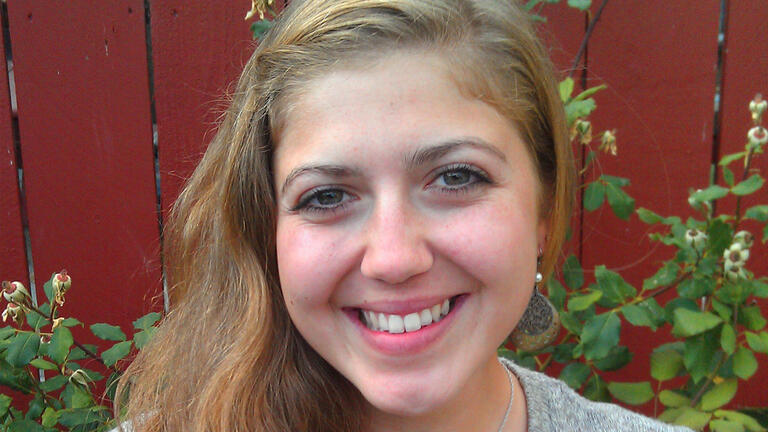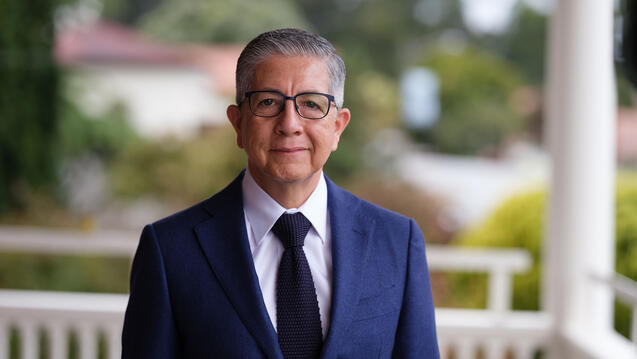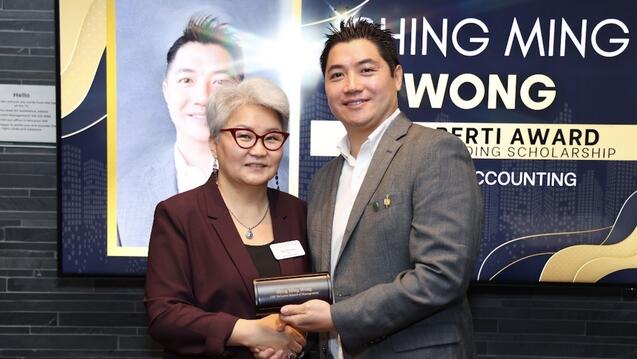SPUR To Ecodistricts To NASA: Alum Finds Continuing Support From MSEM
From working on the Ocean Beach Master Plan, to a thesis on ecodistricts, to the Earth Science Project Office of the NASA Ames Research Center, USF’s MS in Environmental Management program (MSEM) has helped, and continues to help, Elizabeth Juvera (‘15) achieve her career dreams.
“The program management staff is beyond supportive and constantly available,” Juvera said. “My mentor, Maggie Winslow, is still very much my academic and professional support system, and I am grateful to have her honest feedback on my work. I also enjoy reaching out to my fellow alums to bounce ideas and job opportunities off of one another.”
Why USF’s MSEM?
Juvera said that, having been born and raised in San Francisco, “it just seemed right to learn about Environmental Management in the context of my home city.”
More objectively, she chose USF’s MSEM not only because the program’s weekend classes allowed her to keep her full-time work schedule, but because San Francisco itself is one of the cities at the forefront of innovation for many environmental planning strategies.
"Whether it be sea level rise mitigation or urban planning and development, San Francisco will need to anticipate many more people and many more environmental issues in coming decades," she said.
According to Juvera, this makes San Francisco a pivotal city in which to study land use and environmental protection, and put sustainable development tactics into play.
Professional Opportunities
While attending USF, Juvera worked full time at the Exploratorium as a Membership and Development Assistant, and part-time with the Golden Gate National Parks Conservancy as a Project Information Coordinator.
Moreover, she seized an opportunity to intern with SPUR (an urban policy think-tank fostering sustainable development in San Francisco, Oakland, and San Jose) working to progress the Ocean Beach Master Plan (a comprehensive vision to address sea level rise, protect infrastructure, restore coastal ecosystems and improve public access along the western front of San Francisco).
This experience influenced the topic on which she focused her thesis, “Ecodistricts in San Francisco: The Implementation of Neighborhood Regional Planning and Its Potential Effects on Environmental Resilience.”
Ecodistricts
Ecodistricts (neighborhood-scale, community-driven areas of sustainable development) have emerged internationally (Malmö, Sweden; Vauban and Frieberg, Germany; Dockside Green, Victoria, British Columbia) and within the U.S. (AUC Vine City in Atlanta, Seaholm District in Austin, Little Tokyo in L.A.) to create models of adaptive environmental design and advanced urban infrastructure.
In San Francisco, the Central SoMa (South of Market) district is expected to be the first ecodistrict planned and implemented in the city.
“Today, the Central SoMa area has very low biodiversity levels, inefficient infrastructure, and poor water management capabilities,” Juvera said. “Through the implementation of an ecodistrict here, the city can integrate physical and behavioral sustainability measures from existing ecodistricts (such as permeable surfaces, green roofs, stormwater management, environmental education, and complete streets) that will improve upon social, environmental, and economic conditions.”
Reviewing case studies of existing ecodistricts, Juvera’s thesis assessed the applicability of ecodistricts to existing city planning in San Francisco, and proposed management recommendations on how to effectively integrate ecodistricts in the city through policy reform and suggestions for where to place them.
MSEM: A Full Industry Scope
Before deciding to pursue graduate study, Juvera considered the prospect of entering the industry as a lab researcher, but quickly decided that she would rather spend more time outdoors.
And MSEM accommodated that.
“I think the basis of the program is to encourage students to feel confident entering the field in their own way, whether through lab research or public policy or something else altogether,” Juvera said. “MSEM has the resources and personnel needed to give a full scope of the industry to its students, and offers a great view of the professional world by staffing leaders in the field as professors of the program.”
As such, Juvera was able to enter the job market very quickly after graduation with the Bay Area Environmental Research Institute. Through them, she was hired on to the NASA Ames Research Center’s Earth Science Project Office where she currently serves as a Project Coordinator, as well as Event Facilitator and Science Technical Writer. Wearing these hats, she performs several tasks that range from coordinating field projects for airborne environmental research missions to planning science meetings with top scientists from around the world.



